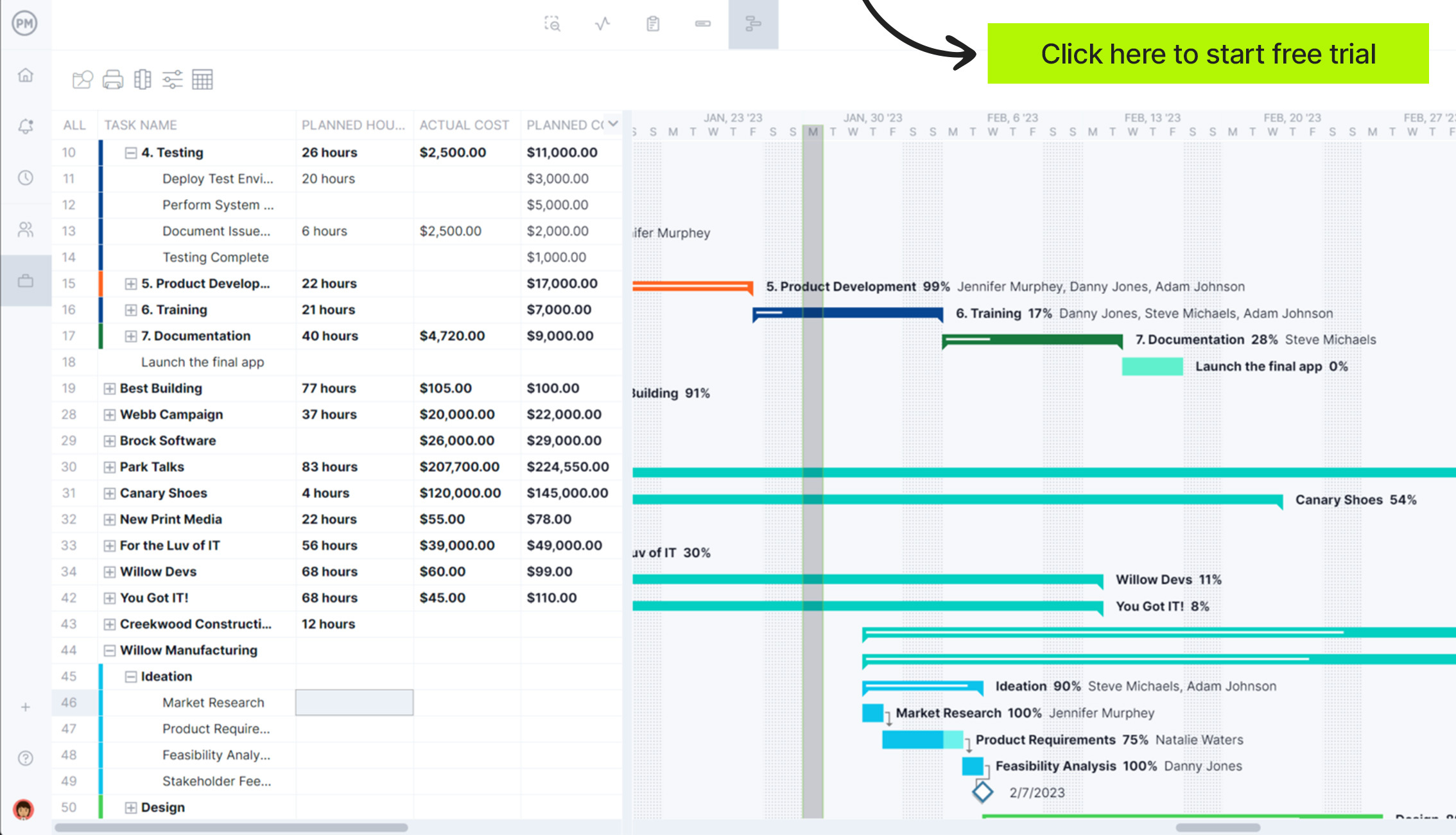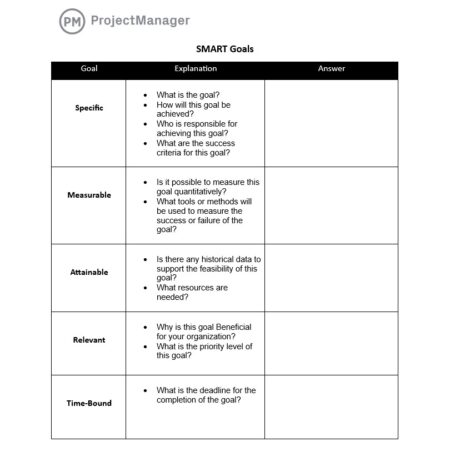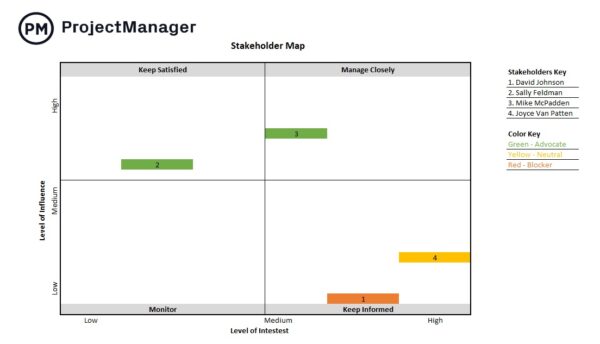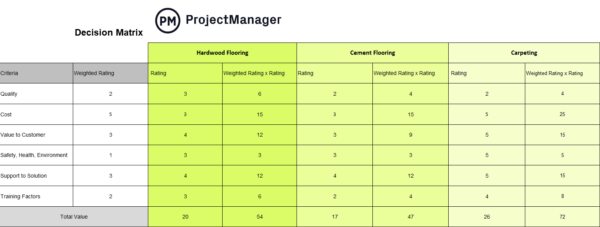Projects, like anything that involves many people working together, need governance. Not only do you need to consider the important details that make up a project, but you also need to consider how a project is requested and executed to achieve success.
We’re going to explore the nuance of project governance and look at the roles associated with it, the pillars on which it stands and much more. Consider this your civics lessons in project management.
What Is Project Governance?
The term project governance refers to the set of activities and guidelines that determine how a project is planned, executed and managed. You can look at project governance as a framework to help oversee the right course for the project. By having project governance as a framework, you provide consistency that adds to the stability of the project.
But project governance goes beyond the decision-making of a single project. It defines the activities of an organization and who is responsible for what. That’s a big slice of the pie and includes everything from policies, regulations, functions, processes, procedures and responsibilities.
It’s clear that project governance is a big job and one that needs project management software to handle all of its responsibilities. ProjectManager is work and project management software that has roadmaps to help you track a portfolio of projects. You also get unlimited storage, collaboration and file-sharing. Make more insightful decisions when you monitor the schedules, budgets and resources in real time. Get started today for free.

The Three Pillars of Project Governance
Project governance stands on three pillars that describe the three areas that define it. These include structure, people and information. Let’s take a moment to look more closely at each of the three pillars of project governance.
Structure
A project must be supported by the organization that’s running it. That means the organization’s senior management is invested in the project. They have to take the time and energy required to create a vision for the project to pass the project on to project managers who will make sure it follows that vision. Therefore, the structure of project governance is not about the project team as much as the whole company.
People
Effective project governance requires the right project manager. This means that senior management must fully understand the activities of the project. This is where project governance helps the project manager understand the project goals and the tasks needed to get there. For this to be effective, those goals must be clear, reachable and sustainable.

Information
This is where a sound process comes into play. While vision and goals are important, without a clear and consistent way to share information, a project is doomed. Projects need open communications and the ability to share, preferably in real time, for project governance to work. That means regular reporting, meetings and more to keep the project directed toward a successful end.
Project Governance Roles
Let’s now look at the different roles that make project governance work. There are many roles in project governance, but three of which are of paramount importance. These include the project owner, key stakeholders and the advisory group. Now we’ll define each of these more fully.
Project Owner
The product owner is the person who represents the organization. This is often not a project manager but usually the person who oversees the project manager.
Key Stakeholders
The project board is made up of the key stakeholders in the project. That is, those who have a vested interest in the project. They might be those who have funded the project or the end-user for whom the product or service is being created. Stakeholders can even be suppliers, but it’s best to keep these key stakeholders at no more than six to run the process more efficiently.

Advisory Group
If your project is one in which it’s impossible to trim down your stakeholders to a manageable number, then you’ll likely form a larger advisory group. This is not a project board, but more of a forum. While the project owner deals with the day-to-day decisions, the advisory group is more for larger issues.
Why Is Project Governance Important?
Project governance is important to every project, from the simplest to the most complex. While more complicated projects tend to make it easier to see why project governance is critical to project success, any project will benefit from how project governance defines, documents and communicates project practices to help control the project and deliver success. Let’s take a closer look at the importance of project governance.
Direction-Setting
Why do projects fail? Often it is for the simplest of reasons: that it is the wrong project at the wrong time. Maybe the organization is over-stretched, or the technology is not mature enough. Whatever the reason, the failure is often baked in by a failure at the top, to properly evaluate whether this is the right project.
Warren Bennis noted that it is a manager’s role to do things right, but the role of leaders is to choose the right things to do. This needs a clear view of the strategic fit of each potential project, and a selection of which projects the organization takes on, that are driven by priorities, risk balancing, resource availability, and other factors.
There are, of course, tools to support this process. But the role of governance is not just a blind application of tools. Consider the long and short-term interests of your organization and avoid the ‘greedy trap’ of taking on one more worthy project despite having insufficient resources to do it, lead it, or govern it properly.
Decision-Making
Decision-making is receiving the attention it deserves. Business journals and the management sections of airport bookshops are filled with articles and books on the subject. All project managers should read a sample of these to better understand what makes a good decision and how to set up the conditions you need in your project.

The challenge that we face is that we cannot simply define a good decision as the right decision. When we make a decision, we cannot know whether it will turn out to be right, but we must know whether it’s a “good” decision and more likely to be right. Project governance structures must embed the conditions for sound decision-making. So, what are these conditions?
Evidence
You need to give each decision-maker independent access to the data. It’s also important that the data they get is in as much of a raw, unprocessed form as possible. Any data processing risks selecting which data to emphasize and introducing a bias in the way it’s presented. If every decision-maker gets the same processed data, they are all subject to the same bias.
Authority
The decision-maker or group must have the full authority needed to make and commit to their decisions. This is largely about legitimacy and status, but also partly about the intellectual authority. Do they have the experience and expertise to make a sound decision?
Process
The process of decision-making can embed faulty analysis and bias or it can counter them. Training is vital to help decision-makers understand how to structure their process. This includes creating proper objectivity and the need to balance data gathering, analysis, and exploration, against the need for timely decisions.
Project Oversight
Structuring and analysis of project data are also vital to the governance role of overseeing your project. This is about ensuring that a project is on track, meeting the needs of the organization and complying with rules, regulations, and procedures.
Whilst there are many important skills for people involved in governance to learn, perhaps their single most important asset is curiosity. This will lead them to deploy the principal techniques: questioning, listening and zooming.
Questioning
There’s an art to asking good questions. If you’re responsible for the governance of a project, you must be prepared to take a forensic approach to uncover the messy realities. This will be especially important at stage gates where you need to gather and test the evidence before committing to a major project decision.
This kind of questioning can often become adversarial, which is why many gateway processes involve people external to the project. But this in turn risks leaving the project manager and their team feeling even more under hostile scrutiny. The challenge for us all is to adopt good governance as part of our mindset and to see questioning – even at its most forensic–as helpful inquiry.
Listening
Questioning is of little use unless it is accompanied by high-quality listening. Yet we all know people whose habit is to ask questions to make a point or to only ask questions for which they believe they know the answer. This of course sets them up for an argument.
You can only steer a true course if you hear all of the evidence and assess every opinion. So, having asked a question, stop thinking about the next one and start paying attention to the answer you get.
Zooming
Nearly every project manager has suffered under one or both of these challenging behaviors from sponsors, bosses, clients or steering groups. Behavior number one is a dogged determination to get into the details of everything the PM is doing. They have a meddling disposition that leaves you feeling as though you have no autonomy and practical ability to lead your own project. On the other hand, this behavior frequently misses the big picture and therefore neglects the most important strategic issues while it focuses exclusively on the immaterial details.
Behavior number two is almost the direct opposite. Detail seems irrelevant to the big strategic picture to some people. So they select to ignore, or cannot be bothered to engage with, the detail. This is fine when things are going well, but sometimes the governance tier needs to dive into the precise facts to see what the project managers are missing.
Imagine the ultimate zoom lens; it can focus on detail like a microscope yet can zoom out to see the project universe in a single view as well. This is what projects sponsors and boards need. It’s a willingness to adjust to the necessary scale along with the perception to know which is right to focus on at any time.
Discipline
Good project governance doesn’t come easily: it takes discipline. An organization needs to set up governance structures, train the sponsors and board members who make them up, and enforce basic procedures that will assure the quality of their work. To fulfill their governance roles well, people require training in strategy setting, decision-making and oversight.
What can project managers do to make some of this happen? Here’s a short checklist of practical steps to consider.
- Set up a project board training event to discuss decision-making processes and information requirements.
- Discuss the same with your sponsor.
- Prioritize strong record-keeping that creates transparency, accountability, and a ready source of good data to help oversight and decision-making process function robustly.
- Establish a stage-gate process for your project, regardless of whether your organization mandates it.
- Allocate time in your project plan for the governance process, and also for those involved (including yourself) to prepare thoroughly.
- Set up criteria for important decisions at the outset of projects.
- Create a requirement for every governance decision to be tested against whether the decision-makers believe it to be in the best interests of their organization.
- Carry out scenario analyses and pre-mortem exercises, to ensure your decision-makers can assess the potential impacts of their decisions.
- Where you are expecting a series of complex decisions, establish a suitably qualified decision group to either make the decisions or advise the decision-makers.
- Make good use of checklists, to reduce the scope for errors and omissions in vital processes.
Two things hold back the forces of chaos that constantly threaten the innovative endeavors we call projects: the project manager’s ability to exert control in the project’s complex and changing environment, and the organization’s ability to impose good governance on the choices it and its project manager make.
We have professional organizations like the APM and the PMI to train and develop project managers. Where is the equivalent for sponsors and project board members? Just now, I consulted the index of my (fourth edition of the guide) the PMI Project Management Body of Knowledge. Between “funding limit reconciliation” and “government regulations” there is nothing. Governance doesn’t even merit an entry in the PMBOK, something that needs to change in the future.
Governance without the tools to enable institutional insight into the project data is primed for failure. The collaborative features coupled with real-time dashboard reports in ProjectManager enable multiple roles within an organization to gain insight into project status and performance. Try it out free with this 30-day trial.


